
Design your dream garden today!
Get in touch with our expert garden designers for a quote.
Find out more
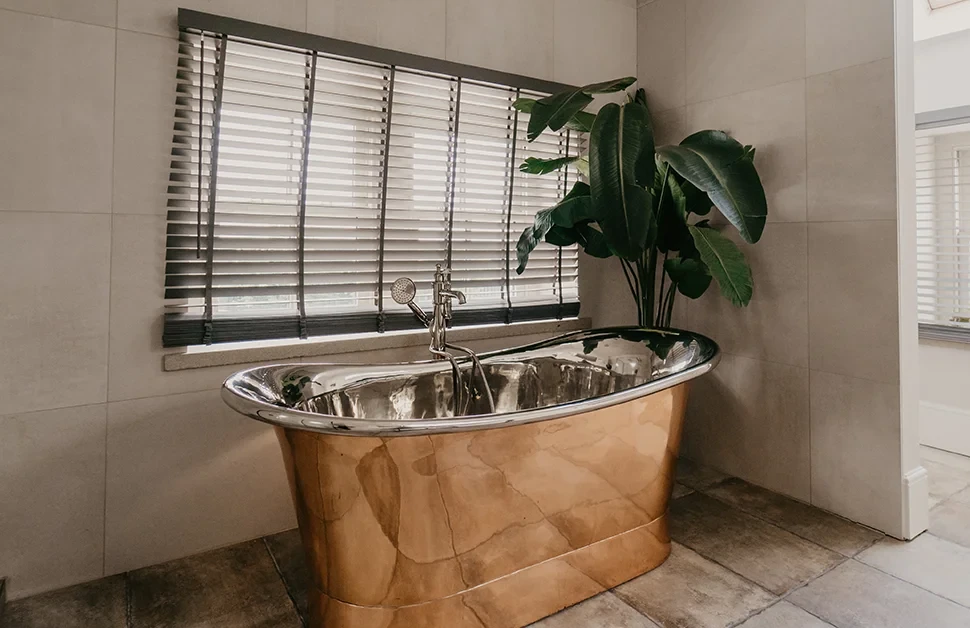
Welcoming plants into your bathroom won’t just transform your space into a lush oasis but will also help reduce humidity and absorb excess moisture, which translates to less risk of mould growth and improved indoor air quality!
Are you searching for beautiful plants that will thrive in your bathroom’s hot and steamy environment? Look no further!
We have compiled our favourite bathroom plants that absorb moisture while also serving as natural humidifiers and adding a refreshing touch of verdant elegance to your interior. Here are our top 10 picks:
#1 Phalaenopsis ‘Moth orchid’
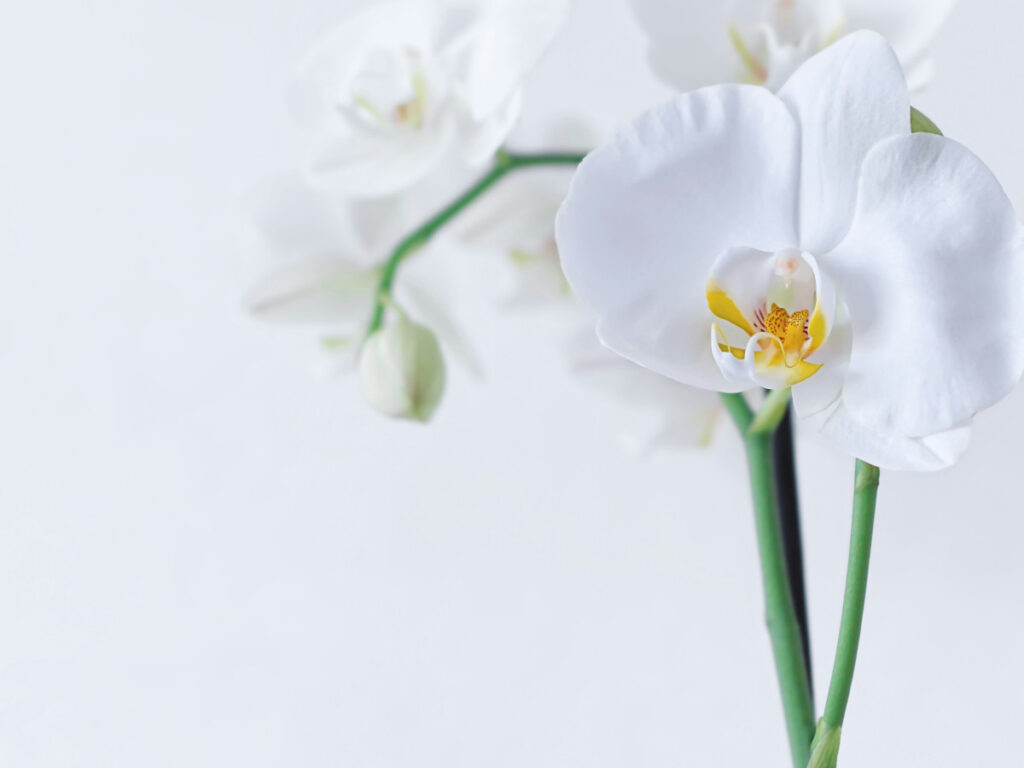
With arching stems, pretty pink/white butterfly-like flowers, and deep green leaves, the moth orchard exudes grandeur and elegance. Beyond their stunning blooms, moth orchards possess remarkable air-purifying and humidity-thriving qualities, making them practical and aesthetically appealing bathroom plants.
Plant Profile:
Appearance: Vibrant, long-lasting flowers reminiscent of butterfly/moth wings that sit at the top of a slender green stem, coupled with deep green, shiny leaves.
Native To: South-East Asia and Australia.
Care:
- Watering: Light and consistent watering, around once a week
- Sun Exposure: Bright, indirect sunlight
- Soil: Best suited to a bark mixture containing sphagnum moss to promote water retention
- Fertiliser: Use a special orchard formula either weekly or once a month during the growing season (spring and summer)
Pet Safety: Non-toxic to pets. Read more about creating a safe environment for pets.
#2 Aloe Vera

With hefty, saw-edged succulent leaves containing a soothing gel, aloe vera will infuse your bathroom with desert charm while also adding a practical touch, thanks to its medicinal, humid-absorbing, and resilient characteristics.
Plant Profile:
Appearance: Thick, deep green succulent leaves with serrated edges, often in a rosette form.
Native To: The Arabian Peninsula, Africa, and Madagascar.
Care:
- Watering: Water sparingly, ensuring the soil is completely dry in between watering
- Sun Exposure: Bright, indirect light
- Soil: Requires a well-draining soil
- Fertiliser: Use a specially formulated succulent/cactus fertiliser at the beginning of the growing season (early spring)
Pet Safety: Not safe for pets to ingest but is beneficial to their skin.
#3 Calathea
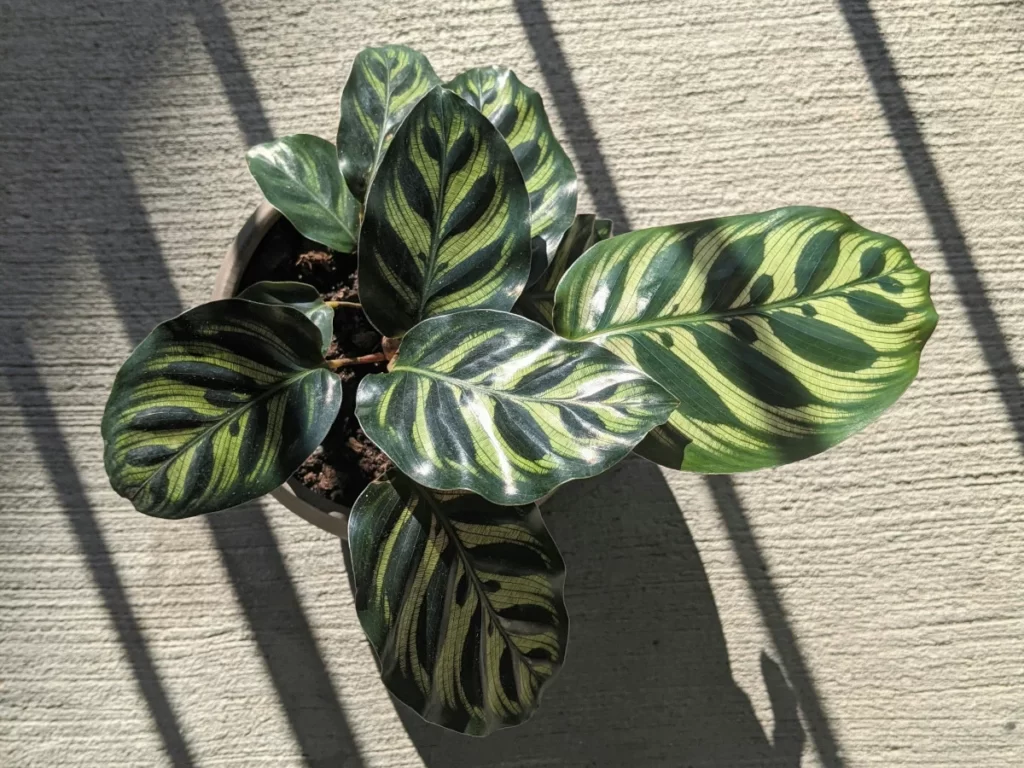
Calethea boasts captivating, intricately patterned leaves, often in shades of green, burgundy, and pink, that fold up at night and open in the day. These enchanting, humidity-loving plants will transform your bathroom into a whimsical botanical haven.
Plant Profile:
Appearance: Large oval-shaped leaves with bold symmetric stripes and narrow, long stems.
Native To: South America.
Care:
- Watering: Water around every 8-10 days, ensuring the soil is evenly moist – Calathea is susceptible to root rot, so always ensure the first few inches of soil are dry before watering
- Sun Exposure: Indirect sunlight – also tolerates low light
- Soil: An orchard bark mix works well for Calethea, keeping the soil moist – ensure soil pH is neutral to prevent root damage
- Fertiliser: Appreciates both liquid and dry organic formulas with high nitrogen content
Pet Safety: Non-toxic to pets.
#4 Adiantum ‘Maidenhair fern’
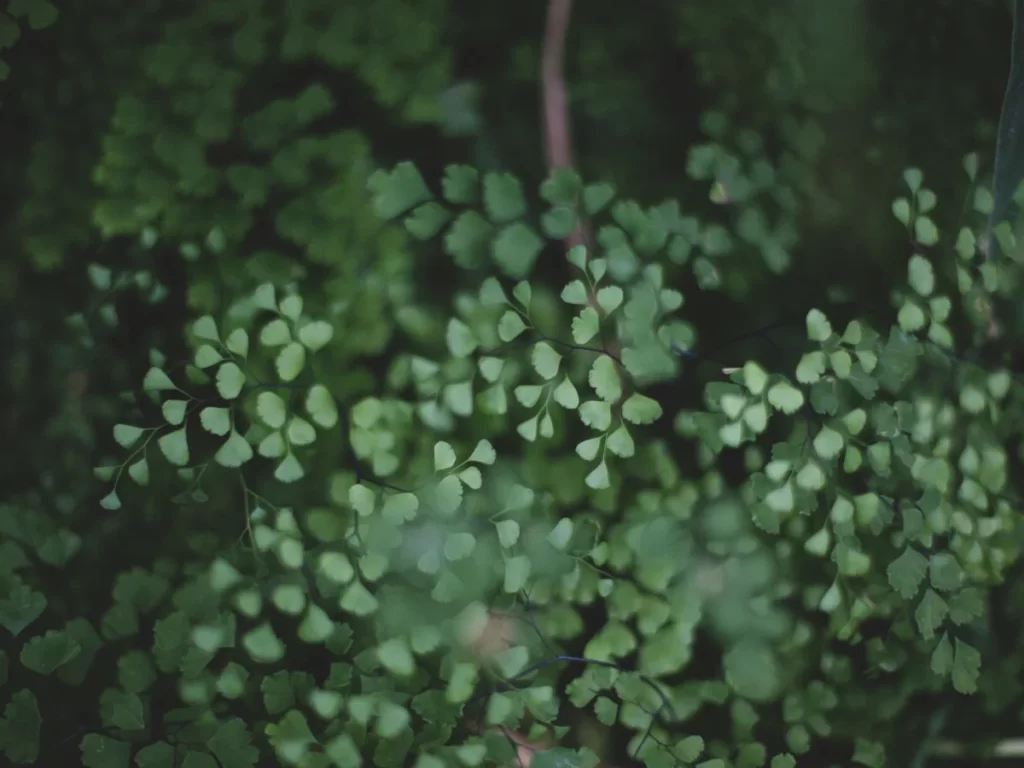
Distinguished by delicate, feathery fronds, maidenhair fern adds a delicate touch of whimsy charm to any interior. Aside from their lush and airy appearance, these captivating plants are also exceptionally easy-going, especially when placed in humid, damp environments, making them the perfect adornment for your bathroom!
Plant Profile:
Appearance: Feathery, rounded green fronds with delicate, wiry stems.
Native To: North America, East Asia, and Himalayas.
Care:
- Watering: Regular watering and misting – ensure soil remains continuously moist but not soggy
- Sun Exposure: Bright, indirect light
- Soil: Requires well-drained soil and tolerates both neutral or slightly acidic pH
- Fertiliser: Apply a balanced fertiliser monthly throughout the growing season (spring and summer)
Pet Safety: Non-toxic to pets.
#5 Zamioculcas ‘Zanzibar gem’
With flawless, glossy green leaves supported by a strong yet slender and elegant stem, the Zanzibar gem is the perfect bathroom plant for anyone seeking a sleek and contemporary aesthetic. This plant will liven your bathroom while serving as a fuss-free ornament, thanks to its adaptability and minimal care needs.
Plant Profile:
Appearance: A thin but sturdy stem coupled with oval-shaped, dark green, waxy leaves.
Native To: East and South Africa.
Care:
- Watering: Water sparingly, every 3-4 weeks – reduce watering during colder months
- Sun Exposure: Bright or medium, indirect light
- Soil: Enjoys a well-draining potting mix – you can use a cactus/succulent soil
- Fertiliser: Feed an all-purpose fertiliser every 1-2 months throughout the growing season (spring and summer)
Pet Safety: Non-toxic to pets.
#6 Rhipsalis cereuscula ‘Coral cactus’
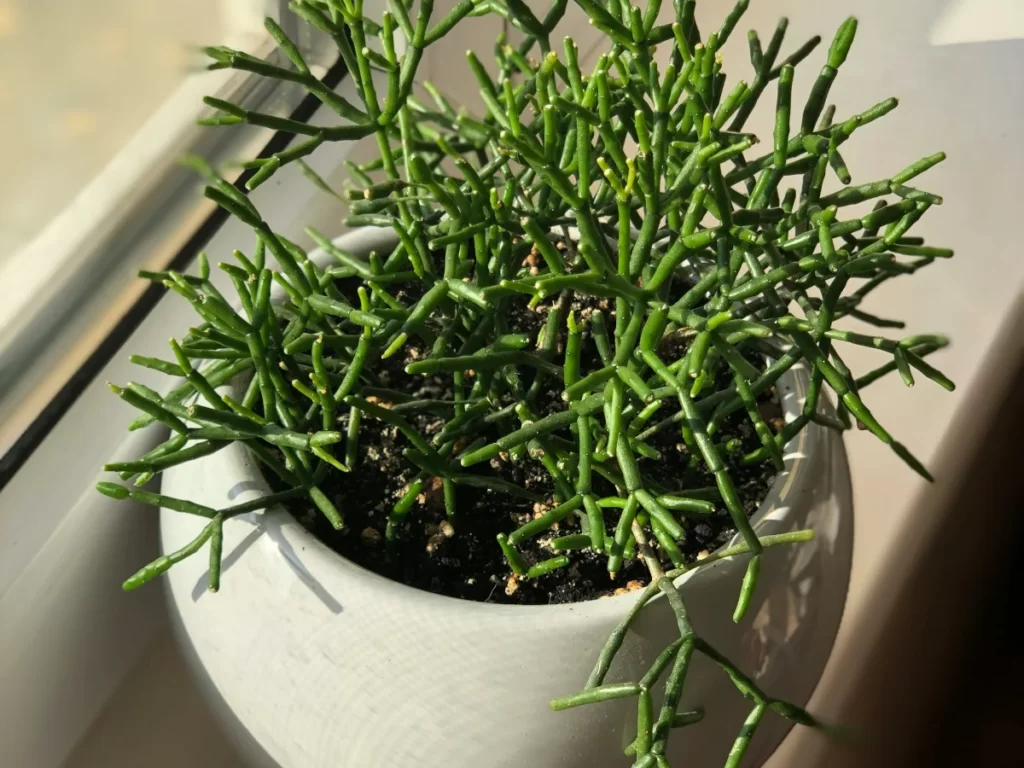
Resembling underwater coral formations, the mesmerising coral cactus will add an alluring, sculptural element to your bathroom interior that will undoubtedly uplift your space with coastal charm, transporting you to the serene beauty of the sea. Not only will this unique succulent look wonderful in your bathroom, but it will also thrive in its humid environment!
Plant Profile:
Appearance: A compact arrangement of petite cylindrical succulent leaves sprouting upright.
Native To: South America.
Care:
- Watering: Water sparingly – only when the top layer of soil is dry
- Sun Exposure: Thrives in bright, full sun
- Soil: Well-draining cactus/succulent mix
- Fertiliser: Fertilising is not essential, but you can apply a special cactus/succulent formula
Pet Safety: Mildly toxic to pets.
#7 Rhipsalis campos-portoana ‘Mistletoe cactus’
Characterised by an unruly display of slender, cylindrical succulent foliage that wildly cascades, the mistletoe cactus is an ornamental bathroom plant that’s overflowing with quirk and character! Perfect for hanging baskets and elevated shelves, the eccentric charm of the mistletoe cactus will effortlessly drape, creating a playful and intriguing atmosphere in your bathroom.
Plant Profile:
Appearance: Slender, cascading stem-like foliage – sometimes blooms tiny white flowers.
Native To: South America, Central America, and Africa.
Care:
- Watering: Water sparingly – ensure the top layer of soil is dry before watering
- Sun Exposure: Bright, indirect light
- Soil: Thrives in a rich, airy, well-draining soil – orchard bark combined with perlite is recommended
- Fertiliser: Appreciates being fed a balanced liquid fertiliser monthly throughout the growing season (spring and summer)
Pet Safety: Non-toxic to pets.
#8 Selenicereus Chrysocardium ‘Fern leaf/Shark tooth cactus’
The fern leaf, or shark tooth cactus, poses as a show-stopping houseplant. With jagged foliage, much like the razor-sharp teeth of sharks, this captivating plant makes a striking statement that will certainly make your bathroom more visually dynamic and unique.
Its minimal needs and robust nature make this sculptural plant wonderfully easy to care for, making it a perfect choice for anyone seeking an ornamental plant without the fuss of high maintenance.
Plant Profile:
Appearance: Elongated and wide, bright green shark-tooth-shaped leaves.
Native To: South Africa.
Care:
- Watering: Requires moderate watering – only water when the top layer of soil is dry
- Sun Exposure: Bright, indirect sunlight
- Soil: A well-draining succulent and cactus soil is best advised
- Fertiliser: This plant is very slow-growing and doesn’t require fertiliser
Pet Safety: Non-toxic to pets.
#9 Dracaena trifasciata moonshine ‘Mother-in-law’s tongue’
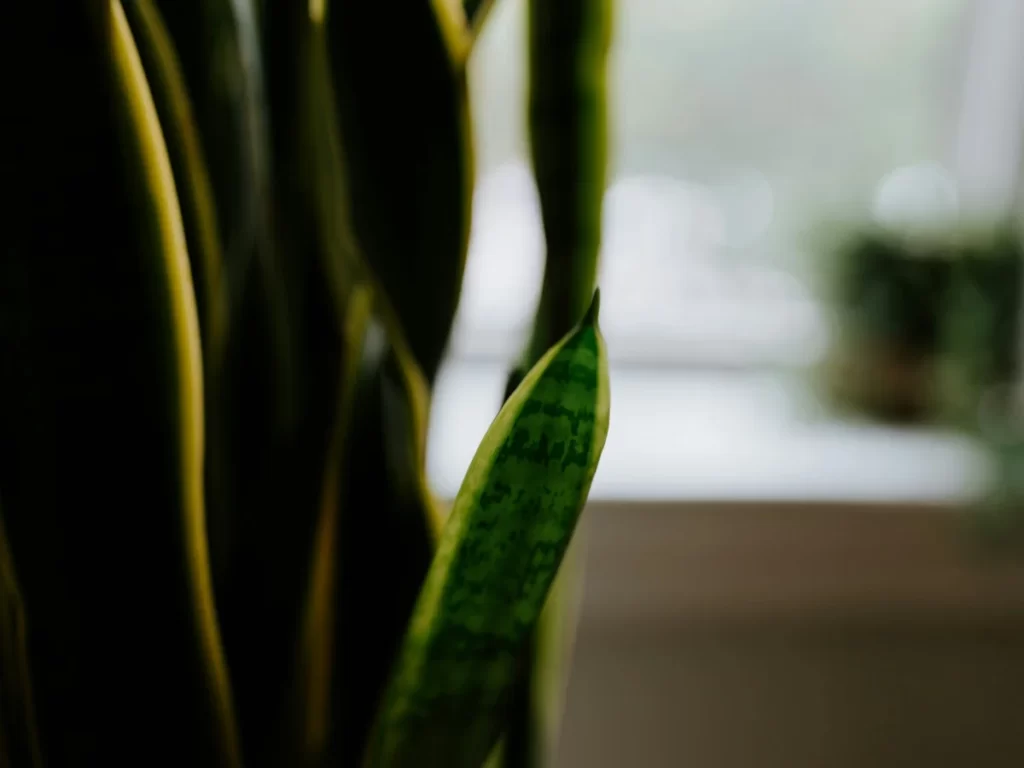
With vertical, wide, silvery-green ‘moonlit’ leaves, this rare moonshine variety of mother-in-law’s tongue exudes celestial charm and enchantment. In conjunction with its undeniable beauty, this specimen is championed for its remarkable air-purifying qualities, making it the perfect bathroom plant that will both visually and physically refresh your home’s environment.
Plant Profile:
Appearance: Long and stiff, vertical foliage emanating silvery-green hues.
Native To: West Africa.
Care:
- Watering: Water sparingly – when soil is completely dry
- Sun Exposure: Best kept in bright, indirect light – also enjoys partial to full sun and shade
- Soil: Requires a well-draining mix – a cactus and succulent soil is recommended
- Fertiliser: Feed a diluted dose of cactus/succulent fertiliser or all-purpose fertiliser monthly during the growing season (spring and summer)
Pet Safety: Toxic to pets.
#10 Senecio rowleyanus ‘String of pearls’
Embellish your bathroom with the opulent string of pearls succulent. With pearl-like leaves that graciously cascade, this ornamental beauty imbues elegance and charm, making it the perfect option for anyone with a lavish taste.
Despite its sophisticated appearance, it doesn’t take much to keep this plant looking its best! Simply treat it with basic love and care, including minimal watering and a few hours of sunlight each day, to keep it happy and thriving.
Plant Profile:
Appearance: Pearl-shaped succulent leaves growing along thin, string-like, cascading stems.
Native To: Southwest Africa.
Care:
- Watering: Lightly water every 2-3 weeks – ensure the soil is dry in between watering
- Sun Exposure: Thrives in bright, indirect sunlight – can tolerate a few hours of direct sunlight during the morning
- Soil: A sandy soil is perfectly suited to the string of pearls plant – succulent potting soil also works
- Fertiliser: Apply a specially formulated succulent and cactus fertiliser fortnightly during the spring, summer and autumn
Pet Safety: Toxic to pets.
FAQs on bathroom plants that absorb moisture:
Here are readily answered frequently asked questions about bathroom plants that absorb moisture:
Many species of moisture-absorbing plants, including Senecio rowleyanus ‘string of pearls’, Adiantum ‘maidenhair fern’, and Chlorophytum comosum ‘spider plant’, are excellent at lessening dampness in bathrooms and reducing humidity levels, and improve air quality.
Plants are natural humidifiers that can absorb water from excess humidity in the air through the tiny pores (‘stomata’) in their leaves before releasing water to evaporate in the air – a fascinating process known as ‘transpiration’. As they release water, plants absorb carbon dioxide, meaning they also contribute to healthy air quality in your home!
Because plants can absorb moisture and reduce humidity levels, they can reduce the risk of mould developing in your bathroom while also contributing to more fresh air in your home.


